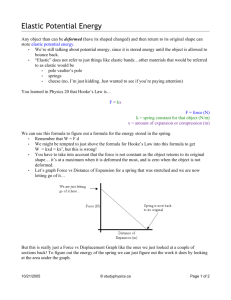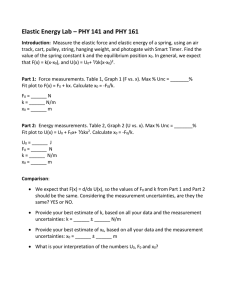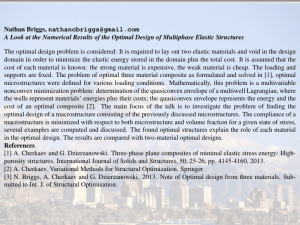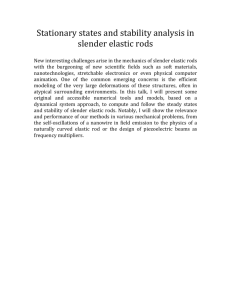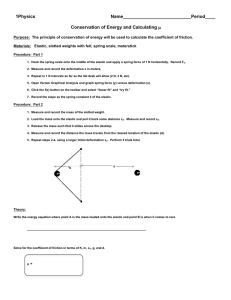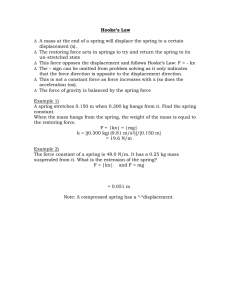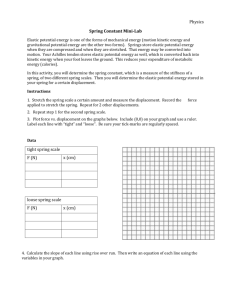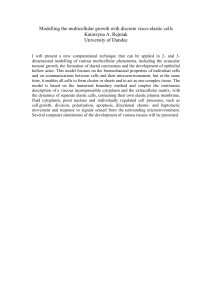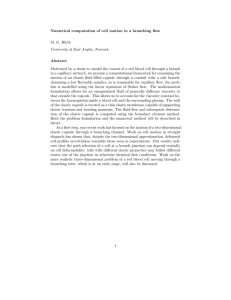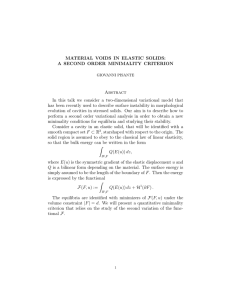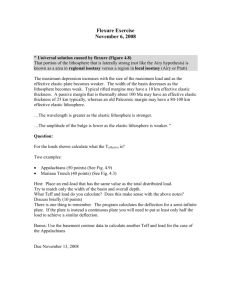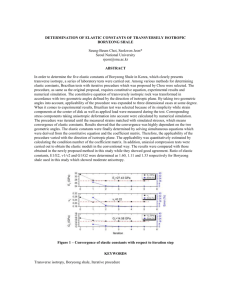Short Report
advertisement
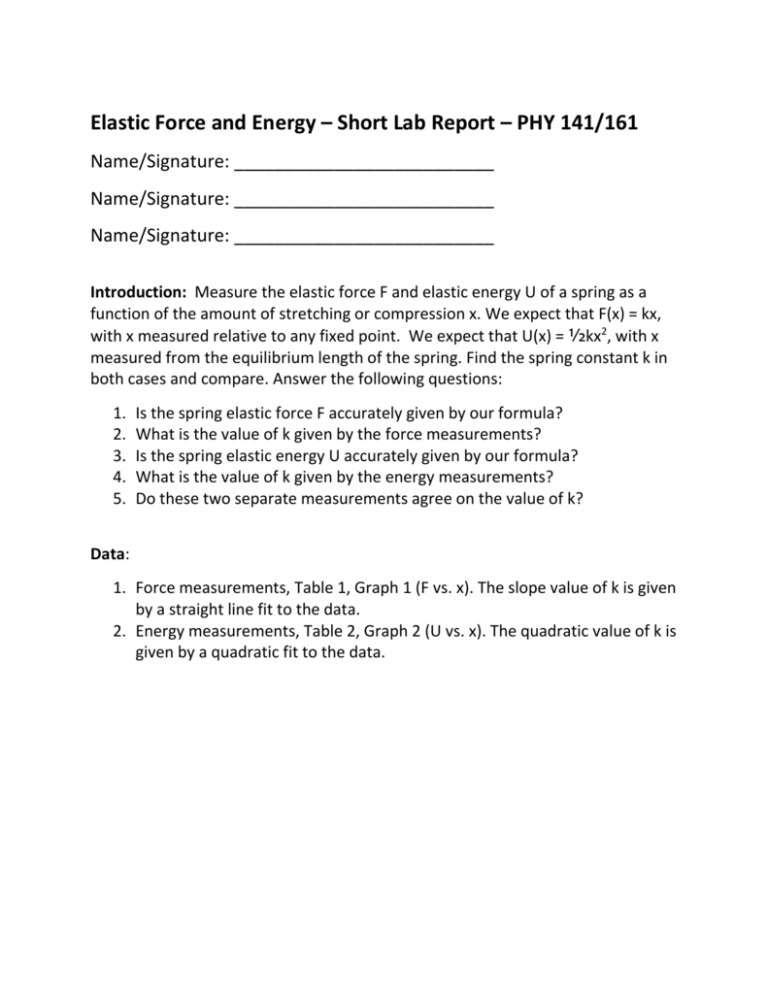
Elastic Force and Energy – Short Lab Report – PHY 141/161 Name/Signature: __________________________ Name/Signature: __________________________ Name/Signature: __________________________ Introduction: Measure the elastic force F and elastic energy U of a spring as a function of the amount of stretching or compression x. We expect that F(x) = kx, with x measured relative to any fixed point. We expect that U(x) = ½kx2, with x measured from the equilibrium length of the spring. Find the spring constant k in both cases and compare. Answer the following questions: 1. 2. 3. 4. 5. Is the spring elastic force F accurately given by our formula? What is the value of k given by the force measurements? Is the spring elastic energy U accurately given by our formula? What is the value of k given by the energy measurements? Do these two separate measurements agree on the value of k? Data: 1. Force measurements, Table 1, Graph 1 (F vs. x). The slope value of k is given by a straight line fit to the data. 2. Energy measurements, Table 2, Graph 2 (U vs. x). The quadratic value of k is given by a quadratic fit to the data. Analysis and Conclusions: Force measurements 1. From the data, show the average value and standard deviation of the values of k calculated from each data point: (k ± k)(F) = ________ ± ________ N/m. 2. Show the value of k given by the slope of the graph: kslope = ________ N/m. 3. Are these two values consistent? I.e., is (k ± k)(F) ≈ kslope ? YES or NO. Energy measurements 1. From the data, show the average value and standard deviation of the values of k calculated from each data point: (k ± k)(E) = ________ ± ________ N/m. 2. Show the value of k given by the quadratic term of the graph: kquad = ________ N/m. 3. Are these two values consistent? I.e., is (k ± k)(E) ≈ kquad ? YES or NO. Comparison 1. Are the values obtained for k from the force data and from the energy data consistent? I.e., is (k ± k)(F) ≈ (k ± k)(E)? YES or NO. 2. What is your best estimate for the value of k? k ± k = ________ ± ________ N/m.
